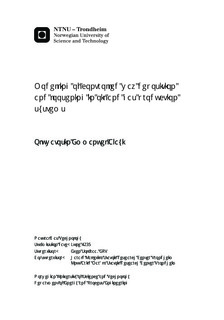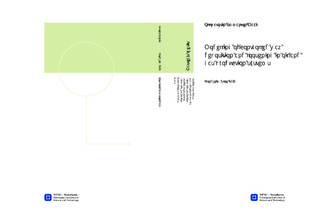| dc.contributor.advisor | Solbraa, Even | nb_NO |
| dc.contributor.advisor | Kallevik, Harald | nb_NO |
| dc.contributor.advisor | Arild Maråk, Knut | nb_NO |
| dc.contributor.author | Ajayi, Oluwatosin Emmanuel | nb_NO |
| dc.date.accessioned | 2014-12-19T11:51:09Z | |
| dc.date.available | 2014-12-19T11:51:09Z | |
| dc.date.created | 2013-10-01 | nb_NO |
| dc.date.issued | 2013 | nb_NO |
| dc.identifier | 652827 | nb_NO |
| dc.identifier | ntnudaim:10007 | nb_NO |
| dc.identifier.uri | http://hdl.handle.net/11250/235278 | |
| dc.description.abstract | A large part of worlds remaining oil and gas resources is found in harsh environments such as deep water and arctic conditions. The development of such oil and gas fields requires advanced process and transport solutions. Wax is precipitated out of solution as reservoir fluid cools down during transport. Wax precipitation may cause operational problems when unprocessed well streams are transported in undersea pipelines.The goal of this work is to investigate modelling concept for controlled wax deposition and controlled wax loosening that is applicable to subsea flowlines in oil and gas production systems. An approach to wax control using the annulus pipe in pipe flow concept is modelled and also described.Wax thermodynamic and deposition models is reviewed and evaluated. The review is aimed to provide accurate prediction analysis of wax precipitation and to serve as a reliable knowledge input into wax deposition modelling in oil and gas flow systems.The cold flow concept for wax deposition solution is developed using an annulus pipe in pipe configuration for the cooling of oil below the wax appearance temperature. A wax deposition zone is created, an effect of a large temperature gradient, which is the driving force between cooling water and the flowing oil in the annulus cooling section of the pipeline. Co-current and counter current oil cooling cases is tested. The counter current annulus-cooling case is validated to adequately knock out potential wax from the oil in the wax deposition zone.The annulus cooling approach is considered to provide an efficient and economic wax control strategy for the mechanical removal of wax in a wax control zone when pigging of wax is to be employed in a flowline eliminating excessively long pigging routes and high cost of pigging operation in typical subsea pipelines.A wax-loosening model is further developed to determine potential loosening and potential transport tendencies of stable wax solids liberated from the wall flowline downstream the annulus. Experimental results from the Porsgrunn flow loop of Statoil AS reveals that stable wax solid is released from wax deposits on pipeline walls when the inner wall is heated for a short period of time such that released stable wax is transported in the cool stream with no or low tendency of re-deposition downstream the flowline.Deposited wax in the wax deposition zone is liberated using hot water sent through the annulus. Model results show re-deposition downstream the flowline. Ability of this wax deposition module to predict wax loosening is criticised. OLGA shows good representation of wax deposition growth in the annulus but incapable to represent expected wax liberation in the flowline at temperatures higher than the wax appearance temperature but below the dissolution temperature. A cold flow wax liberation model using active fluid forces with minimum wall heating for effective stripping of wax from the wax deposition zone is proposed. | nb_NO |
| dc.language | eng | nb_NO |
| dc.publisher | Institutt for energi- og prosessteknikk | nb_NO |
| dc.title | Modelling of controlled wax deposition and loosening in oil and gas production systems | nb_NO |
| dc.type | Master thesis | nb_NO |
| dc.source.pagenumber | 104 | nb_NO |
| dc.contributor.department | Norges teknisk-naturvitenskapelige universitet, Fakultet for ingeniørvitenskap og teknologi, Institutt for energi- og prosessteknikk | nb_NO |

